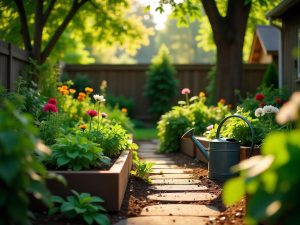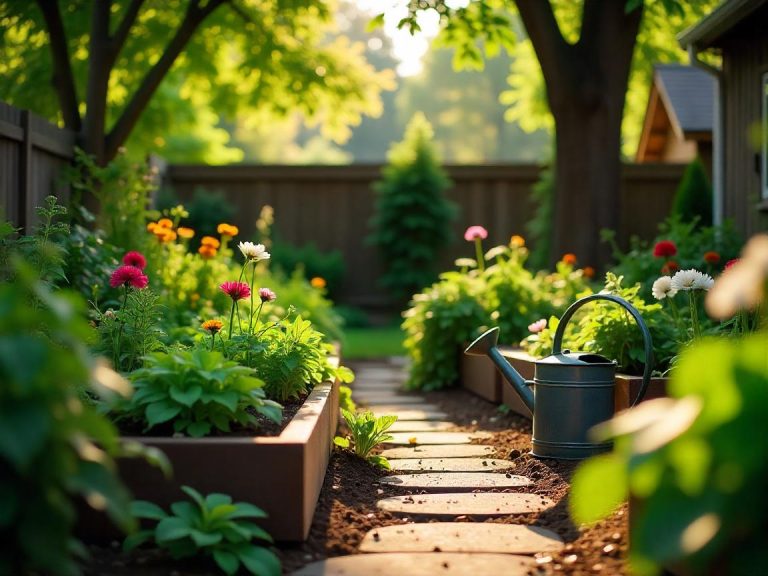
Gardening is more than just a weekend hobby — it’s a rewarding way to bring life, color, and even food to your home environment. Whether you have a sprawling backyard or just a few pots on a balcony, gardening allows you to connect with nature, reduce stress, and make your space more beautiful and sustainable.
Starting your home garden might seem overwhelming, but with the right approach, anyone can develop a green thumb. In this guide, we’ll cover essential tips to help you plan, plant, and maintain a healthy garden — no matter your space or experience level.
1. Understand Your Space and Climate
Before you start buying plants, take some time to observe your space:
• How much sunlight does it get? Most vegetables and flowers need 6–8 hours of direct sunlight per day.
• What’s your climate zone? Knowing your USDA Hardiness Zone helps determine which plants will thrive in your area.
• Is your soil suitable? If planting in the ground, test the soil’s pH and drainage. For containers, use high-quality potting mix.
These observations are the foundation of a successful gardening setup.
2. Start Small and Simple
If you’re new to gardening, it’s best to start with a few easy-to-grow plants. This lets you learn through experience without getting overwhelmed.
Great beginner options include:
• Herbs: Basil, mint, chives, and parsley grow well in containers.
• Leafy greens: Lettuce, spinach, and arugula grow quickly and don’t require much space.
• Flowers: Marigolds, zinnias, and sunflowers are hardy and colorful.
Choose plants that suit your lifestyle. If you travel often or forget to water, opt for drought-tolerant varieties.
3. Choose the Right Containers or Beds
If space is limited or your soil isn’t ideal, raised garden beds or containers are your best friend. They offer better drainage, fewer weeds, and more control over the soil.
Tips for container gardening:
• Make sure pots have drainage holes.
• Use containers appropriate to the plant size (e.g., tomatoes need deep pots).
• Group plants with similar sunlight and watering needs.
4. Water Wisely
One of the most common gardening mistakes is either overwatering or underwatering. Plants need consistent moisture, but their roots also need oxygen.
Watering tips:
• Water early in the morning or late afternoon to minimize evaporation.
• Check soil moisture by sticking your finger 1 inch deep — if it’s dry, it’s time to water.
• Group thirsty plants together to make watering easier.
5. Feed Your Plants Naturally
Plants need nutrients to grow strong and healthy. While synthetic fertilizers are available, organic methods are more eco-friendly and better for long-term soil health.
Organic feeding options:
• Compost
• Worm castings
• Fish emulsion
• Aged manure
Feed plants every 2–4 weeks during the growing season, depending on their needs.
6. Keep Pests Under Control Naturally
A healthy garden attracts all kinds of life — but not all visitors are welcome. Aphids, snails, and fungal diseases can harm your plants if not managed.
Natural pest control tips:
• Plant marigolds to deter harmful insects.
• Spray neem oil or insecticidal soap on leaves as needed.
• Encourage beneficial insects like ladybugs and lacewings.
7. Enjoy the Process and Learn as You Go
Gardening is a journey, not a race. Some plants will thrive, others might fail — and that’s okay. Take notes, celebrate small wins, and adjust based on your experience.
Soon, you’ll not only enjoy fresh herbs or blooms, but also a deeper connection with your outdoor space.
CLICK HERE TO FIND OUT GREAT GARDENING TOOLS ON AMAZON
Final Thoughts
Gardening is one of the most fulfilling upgrades you can make to your home. It enhances curb appeal, improves your well-being, and provides a sense of accomplishment. Whether you’re growing tomatoes in pots or building a backyard oasis, the key is to start small, stay consistent, and have fun watching your garden grow.
